
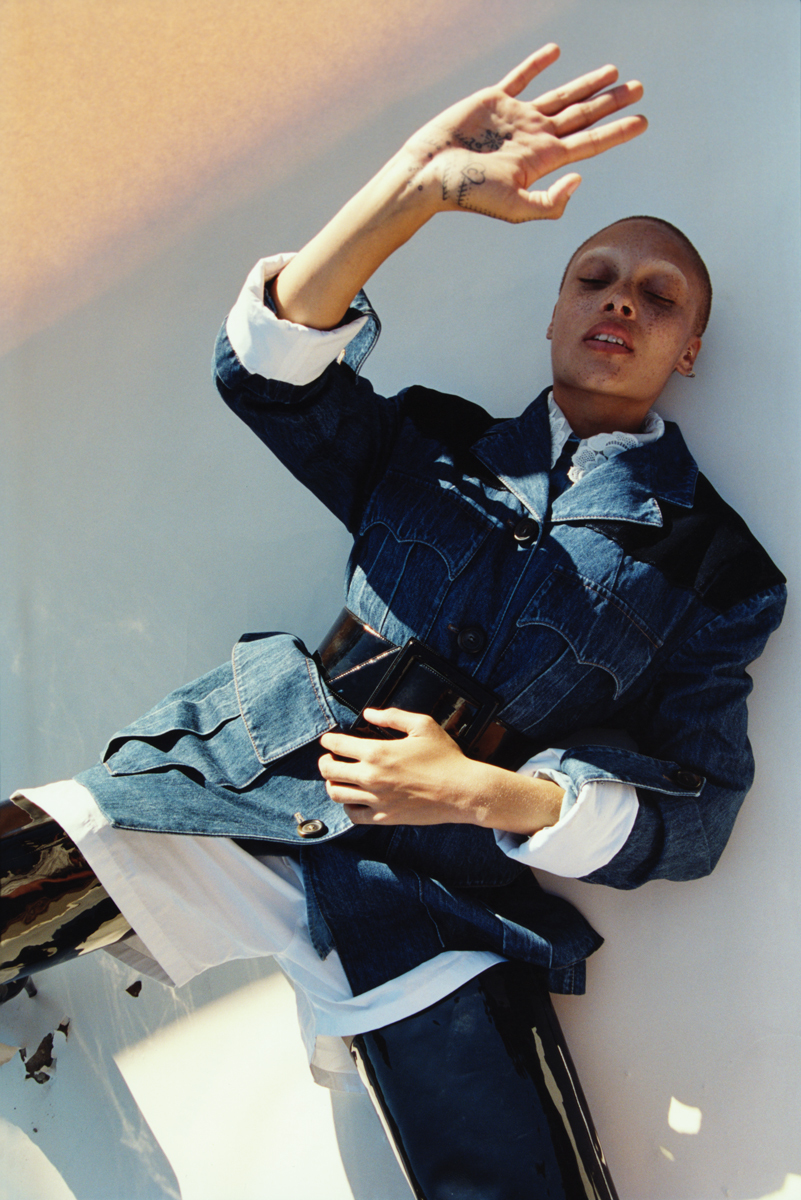
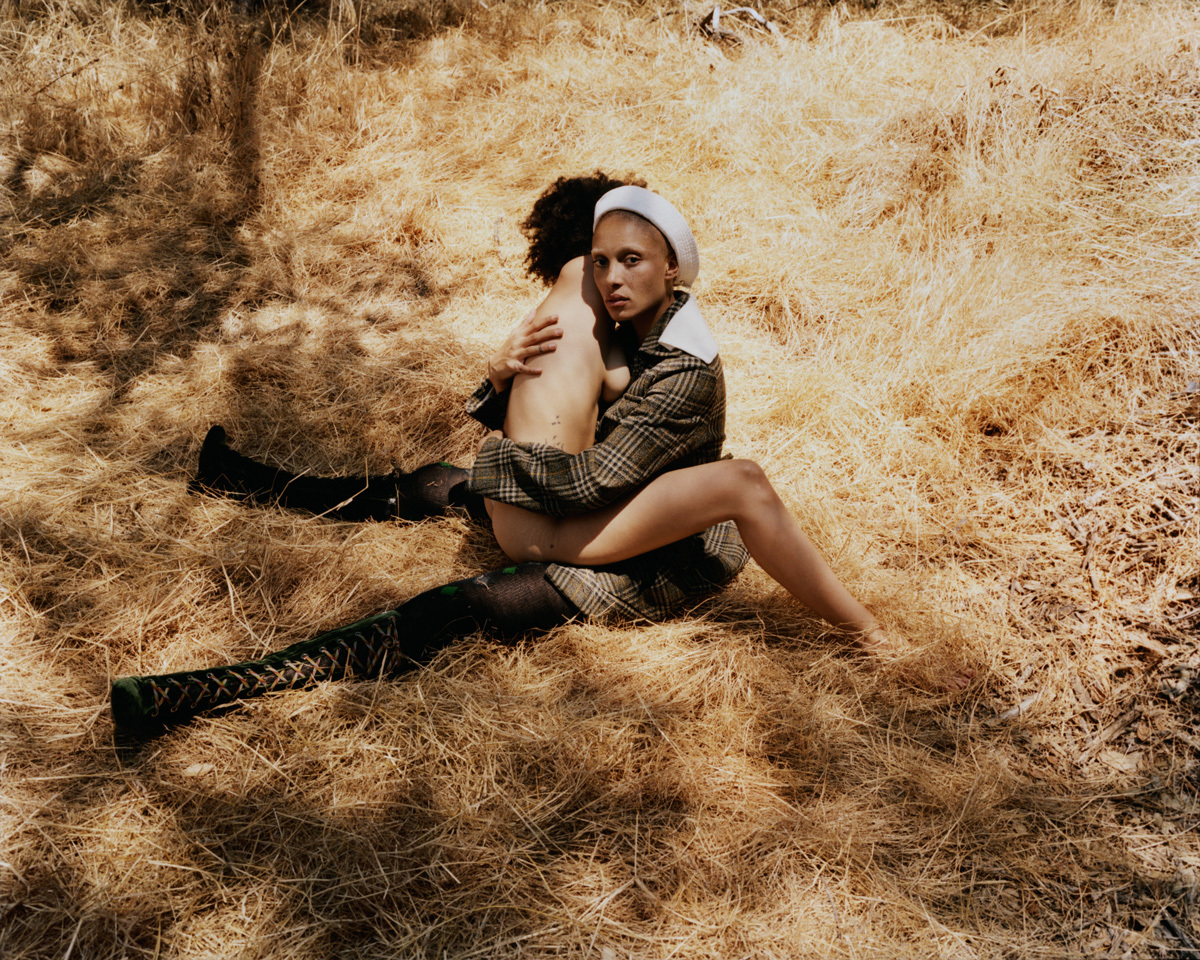
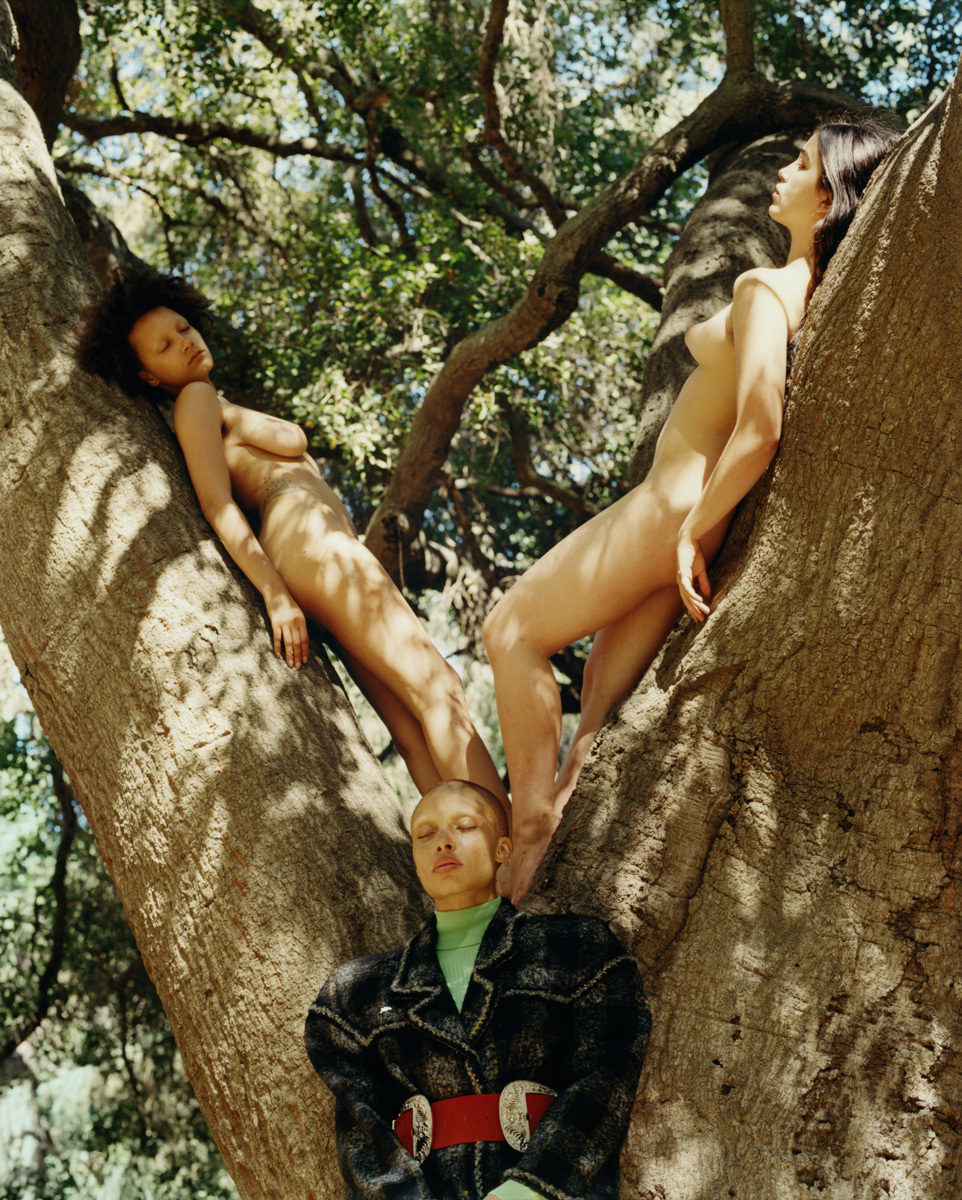
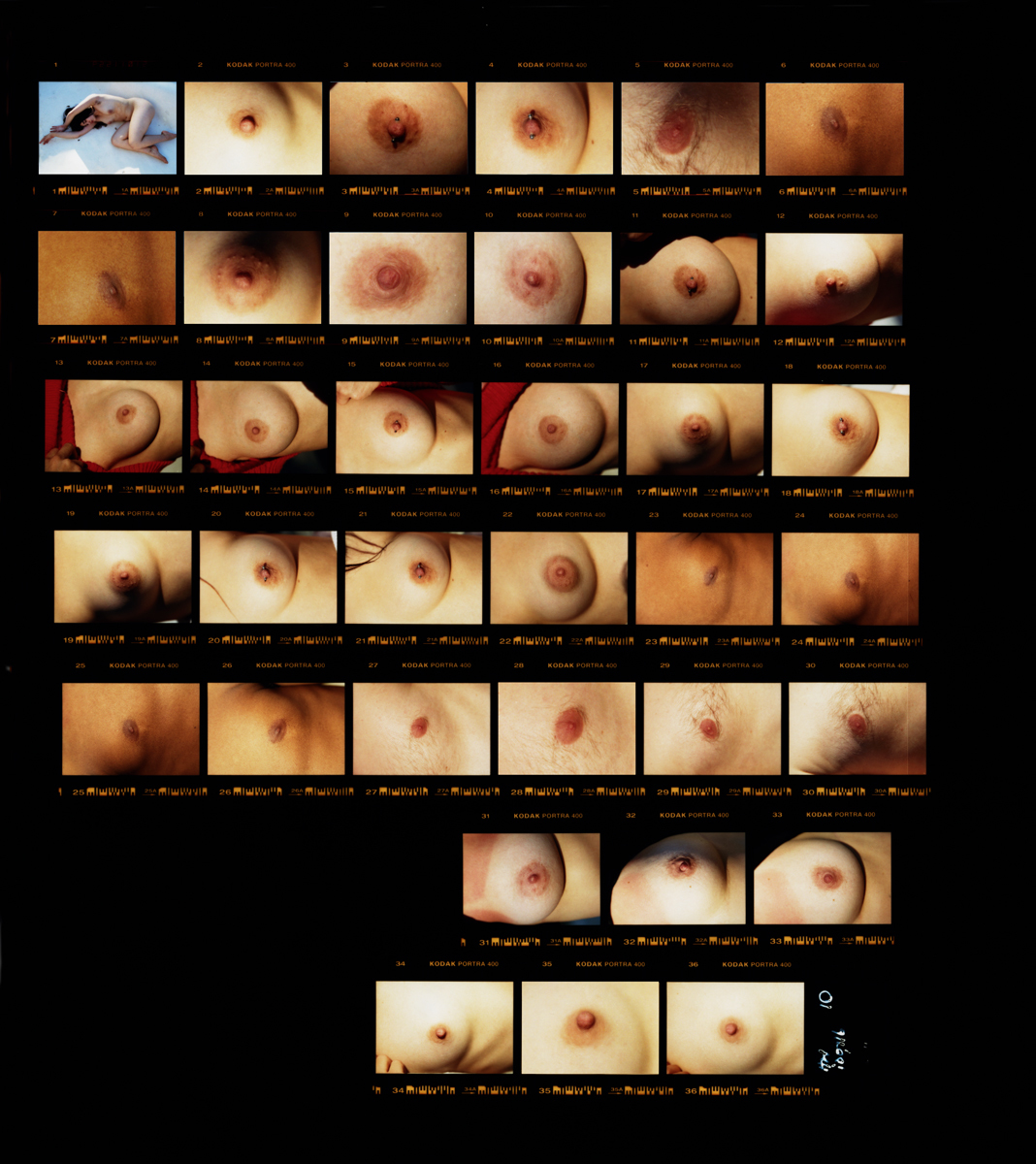
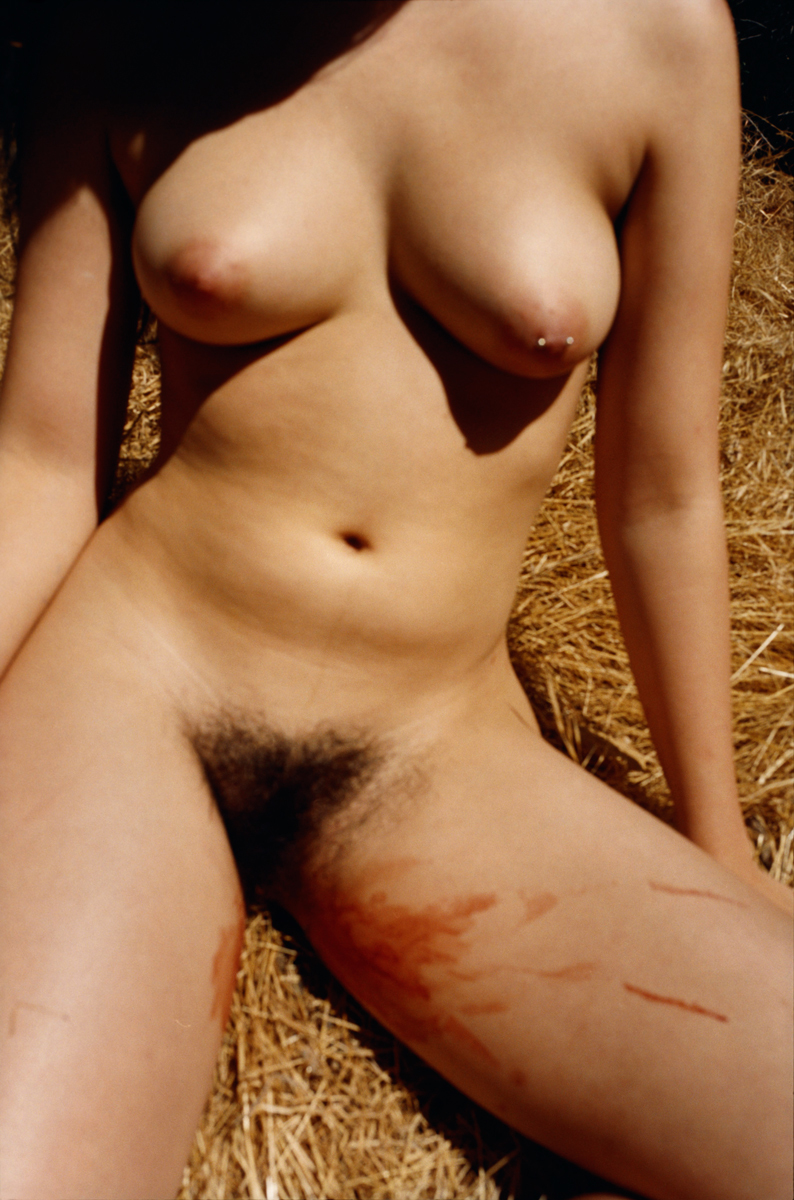
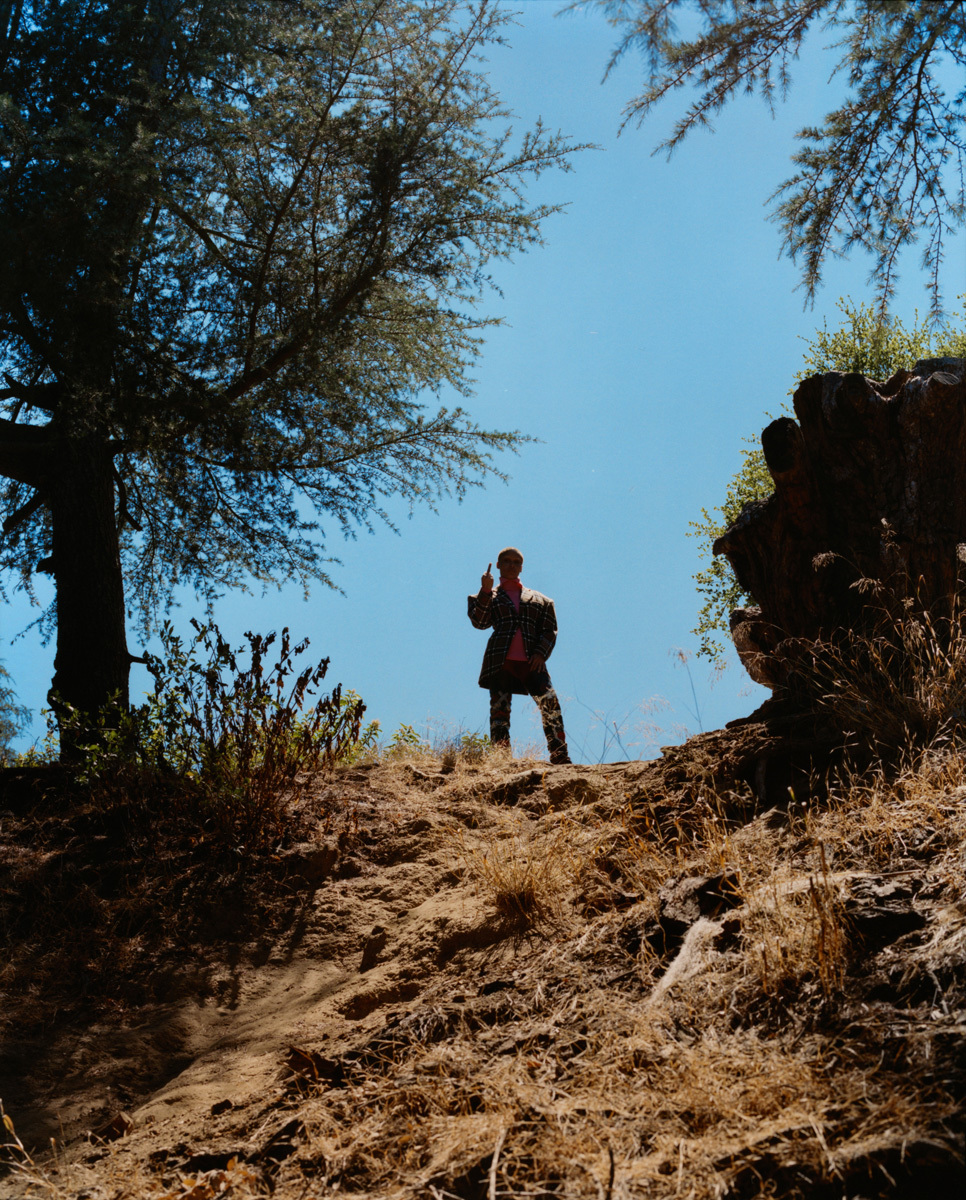

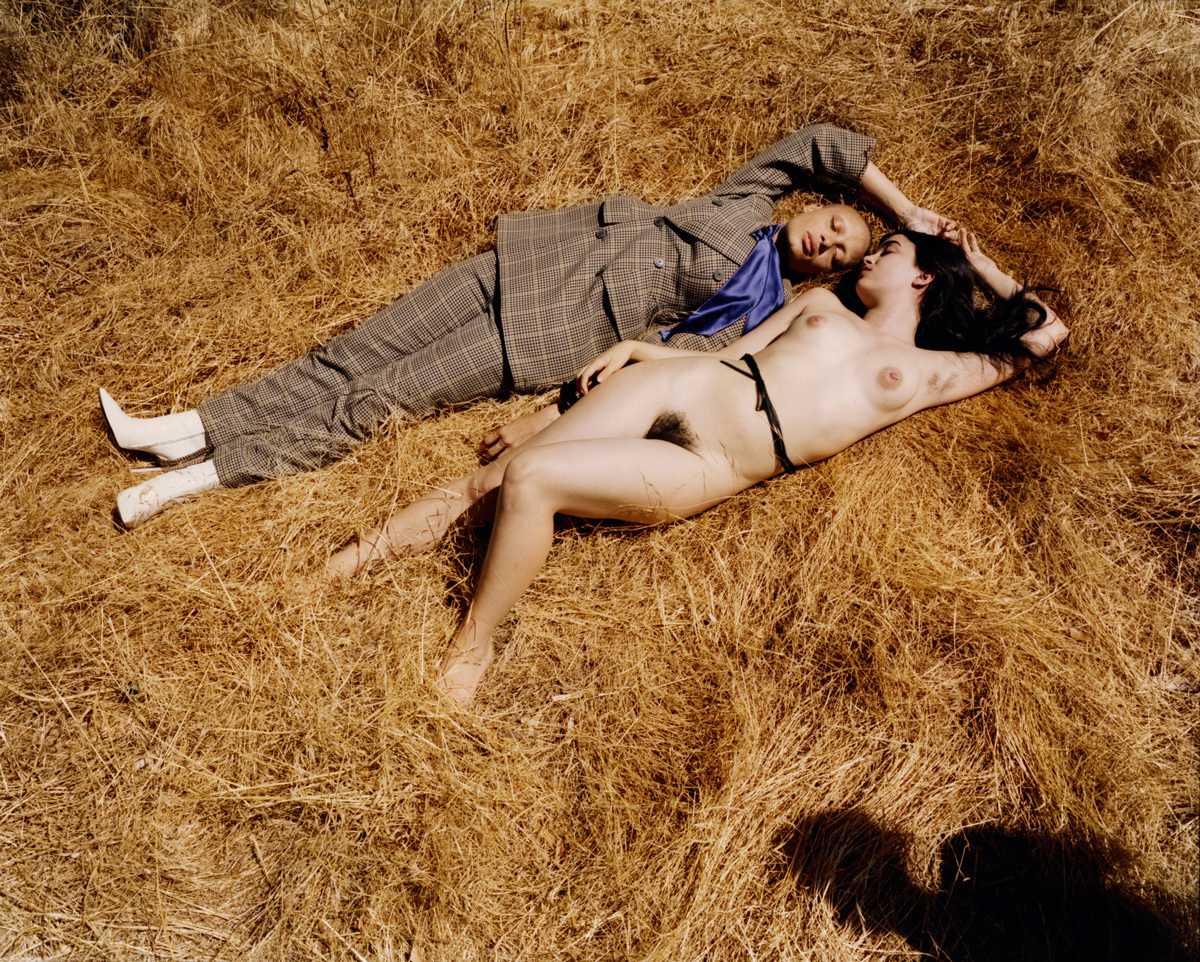
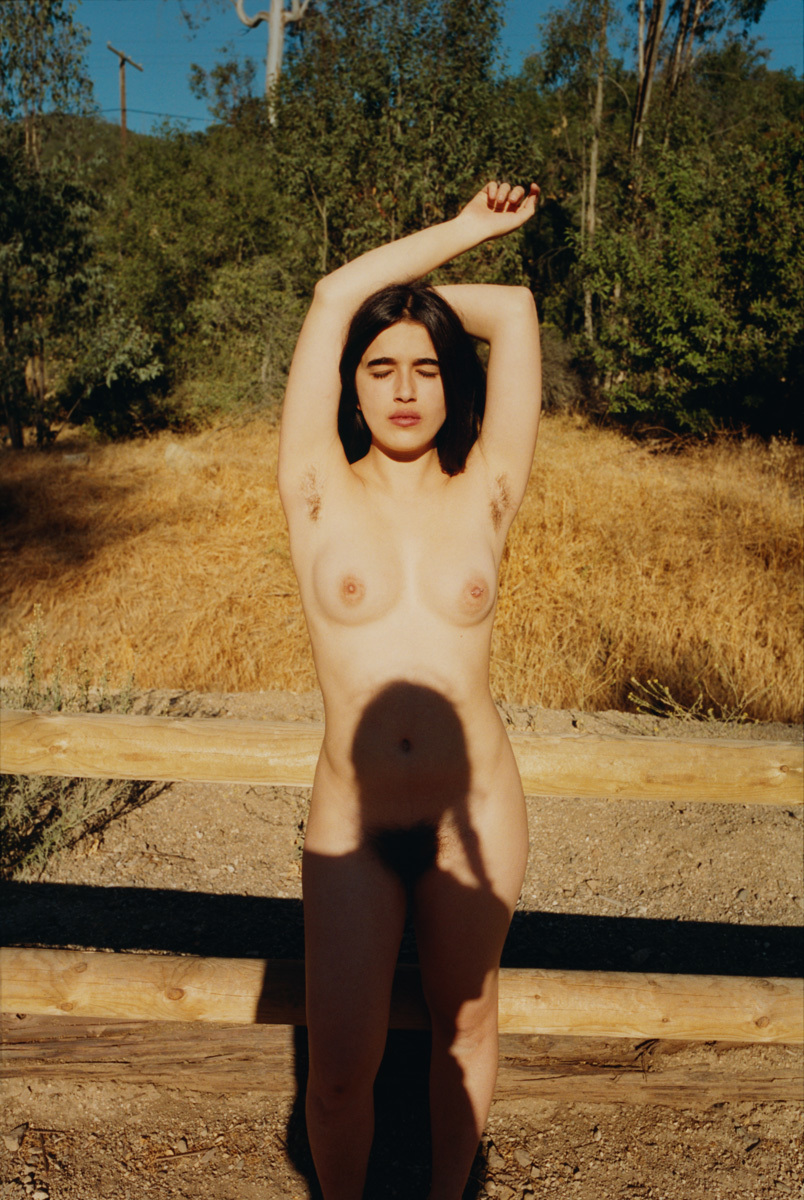
As the creator of beautiful and visually seductive photographs, Harley Weir has become one of the biggest fashion image makers of recent years; she’s captured the industry’s consciousness through her singular vision of the sensuality and tenderness of the human body. Her work frequently explores nudity without making sex its focus.
Looking at Harley’s images is like peering through a keyhole into a different world, one that’s colored sepia, umber, and ochre, full of romantic and regal subjects. It’s simply not enough to look at Harley’s images — you want to touch them, be in them.
Born in 1988, 27-year-old Harley was brought up in London’s leafy suburbs and earned her B.A. in Fine Art at Central Saint Martins, approaching her photographs much like the greats she studied. Her work bridges a generational gap between the gritty analogue photographers of the 90s and the internet native kids who spin out her work across Tumblr and Instagram in a series of endless reblogs and reposts. Yet her up-close and personal lens exists in a world and time of its own.
It should be no surprise then, that fashion’s biggest brands are clamoring to work with her. In just a few short years, Harley has reimagined the worlds of Gucci, Calvin Klein, Stella McCartney, and McQ. She’s brought Chloë Sevigny, Liv Tyler and Binx together for Proenza Schouler. Her images are routinely featured in the pages of Vogue, Pop and, of course, i-D. For our Female Gaze Issue, Harley got back to nature for an intimate study of our cover star, Adwoa Aboah, in California’s Franklin Canyon Park. Meet the woman behind the camera with the world at her fingertips.
What is your earliest memory?
I used to declare I could remember the day I was born… being held up to the window and seeing for the first time. A bright, blurry light, the feeling is nothing I can describe, something like excitement and being blinded. But that can’t be true!
When did you start taking photographs?
I was handed a disposable camera on my first school trip to a farm, the animals were much more exciting through this plastic box. I immediately got intrigued and would carry a disposable on me for all special occasions to come.
Your photographs have been deemed highly sexual. Is that something you are conscious of?
As a girl you grow up being highly sexualized; it’s something you have to work through on your way to becoming a woman. So it has definitely bled into my work, consciously and unconsciously.
Your images always feel very personal and intimate, how do you connect with your subject?
Photographing people is a collaboration, a threesome even, the camera being the third party. Whether you get on well or not outside the photograph’s framework, the camera can change a relationship. There can be sheer unexpected magic, guarded performance, and totally uncomfortable and awkward situations. It’s hard to predict.
What is your favorite part of the female form to photograph?
I like it all, eyelashes to toenails!
Your “up-skirt” shot of Klara Kristin for Calvin Klein stirred a lot of controversy. Why do you think images that hint at sexuality make a certain part of society uncomfortable?
I actually think the image caused controversy because it wasn’t sexy enough! We are inundated with images of oil-sodden women clutching their naked breasts, and if it’s shot straight on, then “she’s in control.” We need to give people something that’s real, something that reignites the conversation about female representation. We are all too used to seeing furiously objectifying images as standard these days. It highlights the warped perception of what is perverted and what is innocently intimate.
Where do you get your inspiration from?
Seeing, touching, smelling, hearing, reading, writing, abstract moments of intrigue… all of the stuff life throws at you.
Why do you think there is a surge of female photographers at the moment?
Photography is a profession that I feel very much suits “feminine” traits; it is also a very privileged practice. I certainly would not be where I am today if I hadn’t lived at my parents’ house until only a year ago! It takes huge dedication, and it’s not something women have had the support to pursue until recently.
Why do you think female photographers are important now?
A female point of view should be seen and classed in the universal sense, the same way a man’s view is. A women’s take on images should be everyone’s business.
Do you behave differently if you are photographing a man rather than a woman?
How I respond is more dependent on the person. I couldn’t say women are always like this or men are like that, there is too much variation.
Do you feel any duty or responsibility as a photographer?
There’s a lot of responsibility being a photographer. One form it takes is when handling someone else’s image; I often feel it my duty to make someone feel good about themselves. Even though I show something of reality, I always like to project people at their best. My eyes prefer to see what an audience might perceive as a person’s worst, but I haven’t been brave enough to show that.
What makes you to want to continue to take photographs?
Knowledge. It might sound cheesy but I learn so much through my work. I would be very stupid without it. The only way I learn is with my whole body; if I’m not seeing it, touching it, doing it, or talking to it, I find it hard to take in.
Who have been some the most instrumental female figures in your life?
My mother and my friends.
You travel extensively for work. Where do you find the most beautiful female subjects to shoot?
There’s beauty everywhere, I could never confine it.
How do you think the depiction of models in fashion helps (or hinders) the modern female image?
Fashion images are a reflection of what is happening to culture at a particular time, it marks a generation. There is a serious lack of diversity overall, but I think fashion and the rest of world has made hints that it’s ready to change and I see that in what’s coming out today — I’m proud to be a part of it.
Has there been an instance where you felt underestimated because of being female?
All the time, but I make the most out of it. All disadvantages have their advantages.
In your own words, how would you describe your work?
It’s me, slowly figuring out the world bit by bit.
What legacy would you like to leave?
I’d like to be a part of a time when women are free from suppressing laws and ridiculous traditions.
Credits
Text Lynette Nylander
Photography Harley Weir
Styling Julia Sarr-Jamois
Hair Tina Outen at Streeters using Bumble and bumble. Make-up Thomas De Kluvyer at Art Partner using Chanel. Nail technician Alexandra Jachno at Aim Artists using Chanel Beaute Des Ongles Extreme Shine. Set design Will Lemon at Owl & The Elephant. Photography assistance Rachel Lamb. Styling assistance Bojana Kozarevic, Rosie Williams. Hair assistance Andres Copeland. Make-up assistance Atlas Ferrara. Production Gabe Hill at GE Projects. Production co-ordinators Beau Bright, Suzy Kang. Production assistance Tyler Ofstedahl. Model Adwoa Aboah at Tess Management. Corey Washington and Alixx Vernet.
